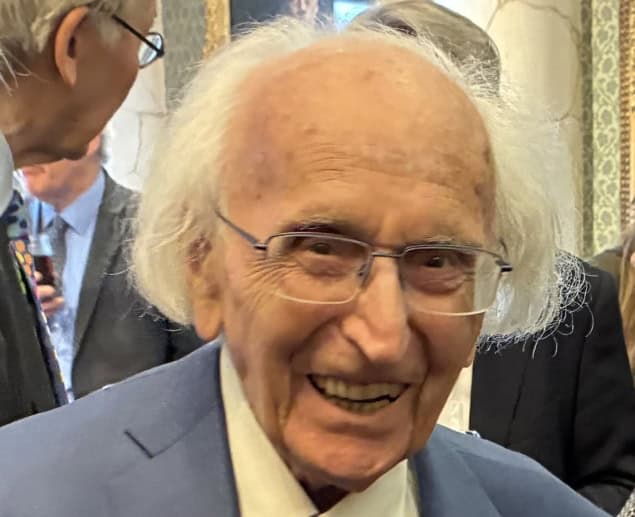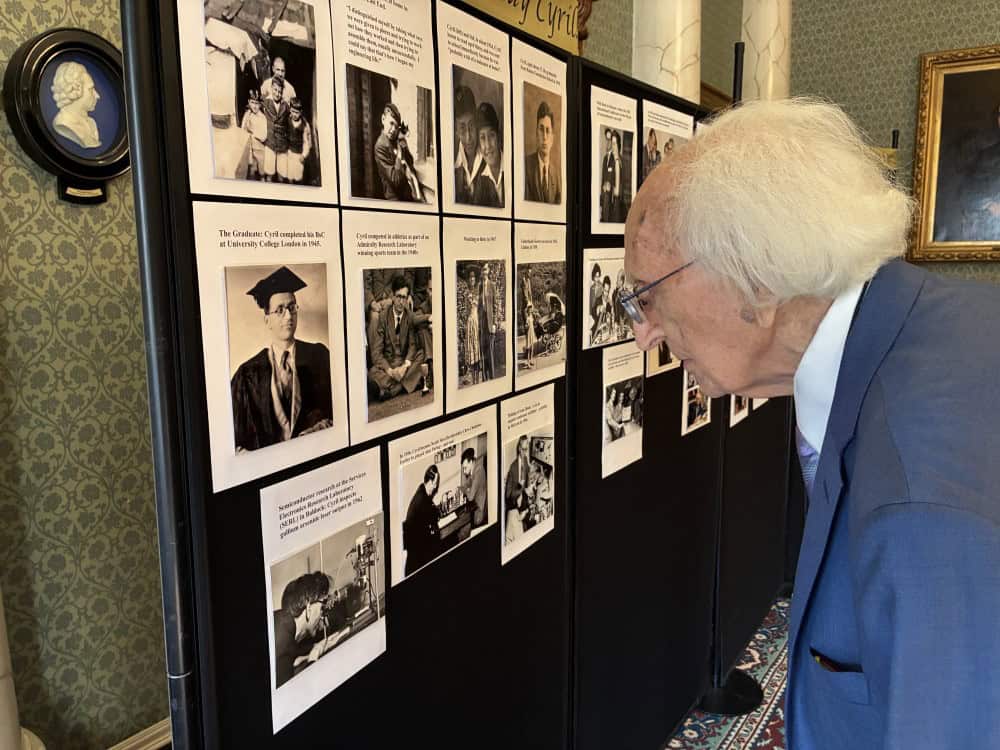
Cyril Hilsum, a former president of the Institute of Physics (IOP), celebrated his 100th birthday last week at a special event held at the Royal Society of Chemistry.
Born on 17 May 1925, Hilsum completed a degree in physics at University College London in 1945. During his career he worked at the Services Electronics Research Laboratory and the Royal Radar Establishment and in 1983 was appointed chief scientist of GEC Hirst Research Centre, where he later became research director before retiring aged 70.
Hilsum helped develop commercial applications for the semiconductor gallium arsenide and is responsible for creating the UK’s first semiconductor laser as well as developments that led to modern liquid crystal display technologies.
Between 1988 and 1990 he was president of the IOP, which publishes Physics World, and in 1990 was appointed a Commander of the Order of the British Empire (CBE) for “services to the electrical and electronics industry”.
Hilsum was honoured by many prizes during his career including IOP awards such as the Max Born Prize in 1987, the Faraday Medal in 1988 as well as the Richard Glazebrook Medal and Prize in 1998. In 2007 he was awarded the Royal Society’s Royal Medal “for his many outstanding contributions and for continuing to use his prodigious talents on behalf of industry, government and academe to this day”.

Despite now being a centenarian, Hilsum still works part-time as chief science officer for Infi-tex Ltd, which produces force sensors for use in textiles.
“My birthday event was an amazing opportunity for me to greet old colleagues and friends,” Hilsum told Physics World. “Many had not seen each other since they had worked together in the distant past. It gave me a rare opportunity to acknowledge the immense contributions they had made to my career.”
Hilsum says that while the IOP gives much support to applied physics, there is still a great need for physicists “to give critical contributions to the lives of society as a whole”.
“As scientists, we may welcome progress in the subject, but all can get pleasure in seeing the results in their home, on their iPhone, or especially in their hospital!” he adds.



